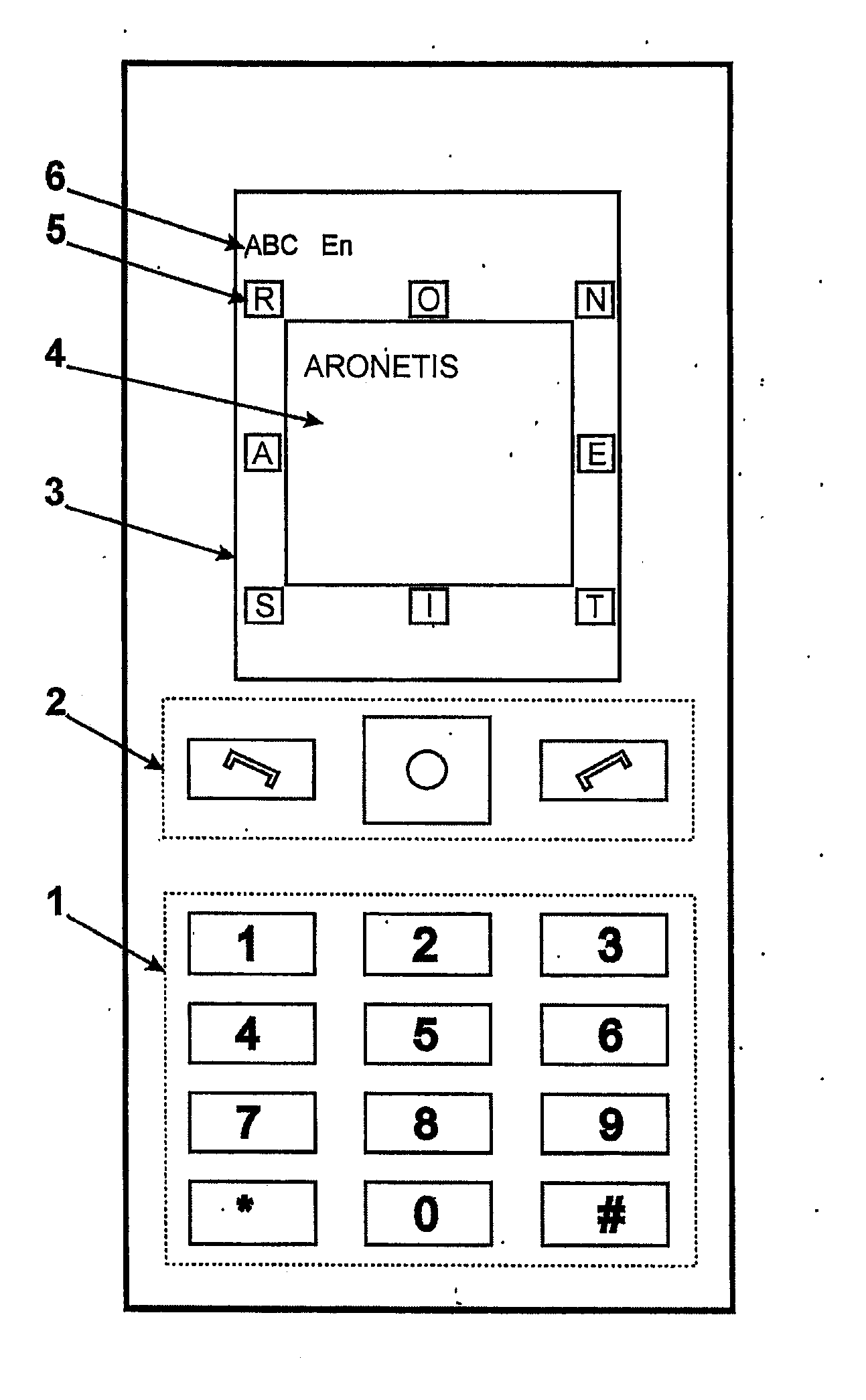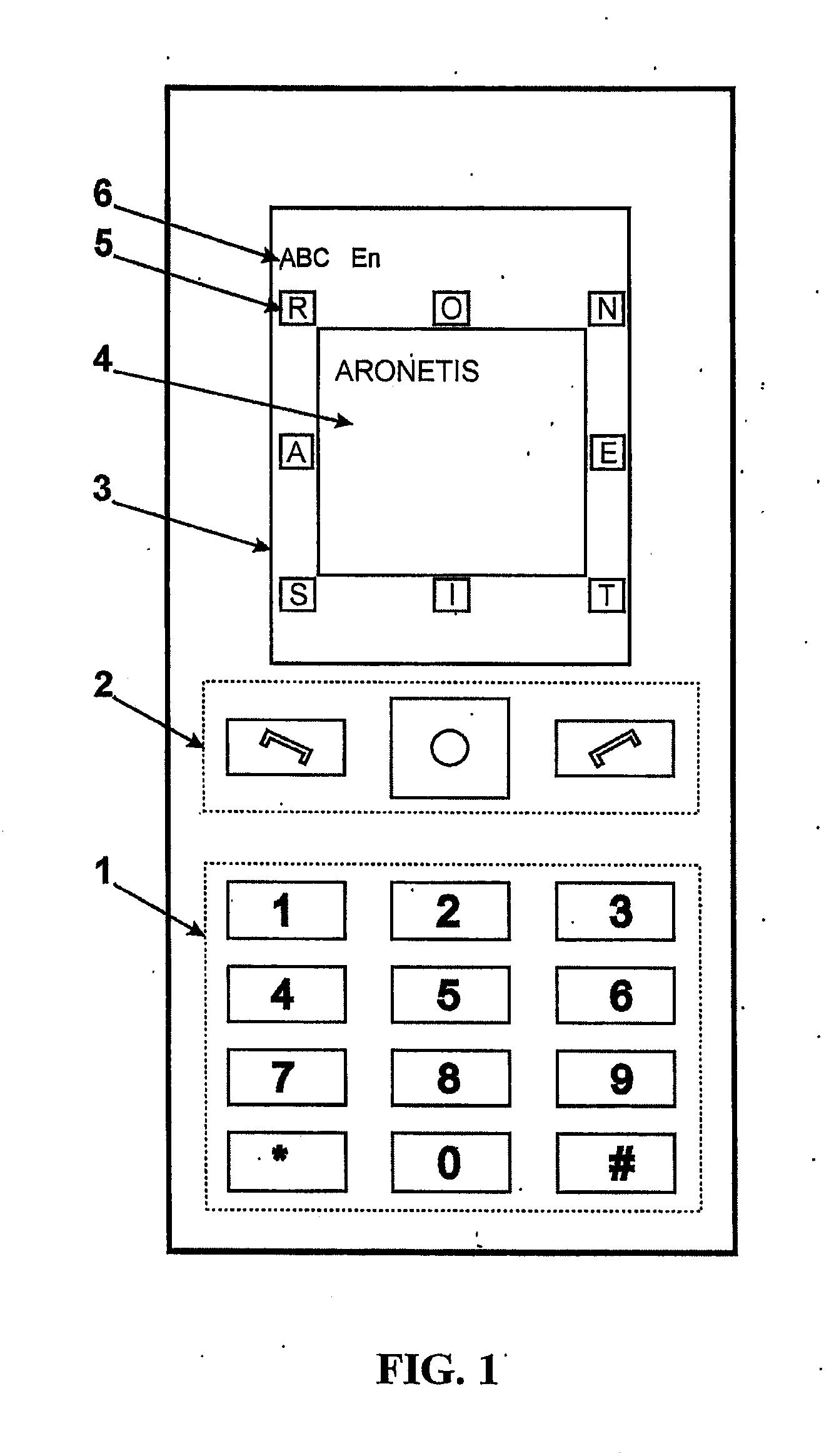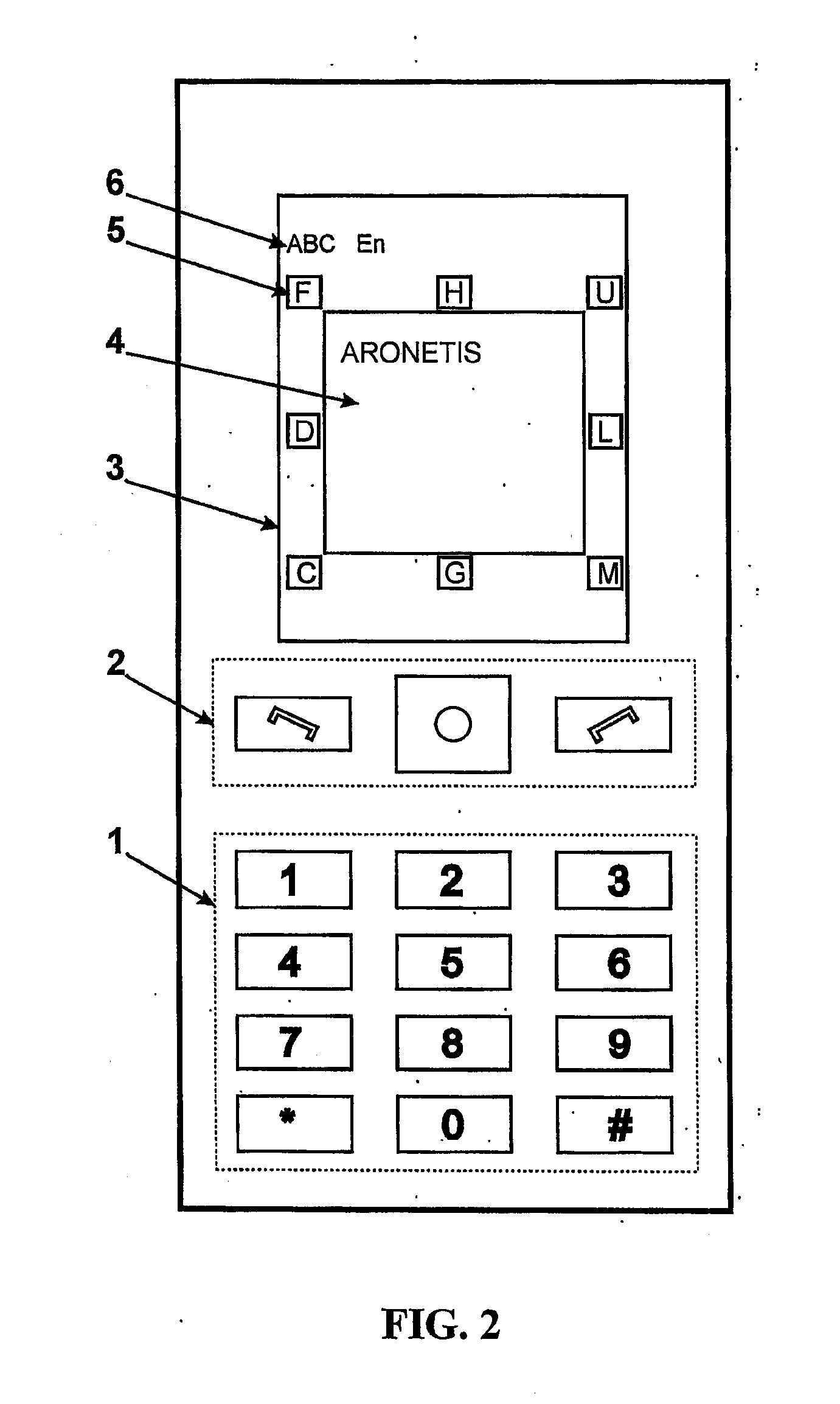Method and matrix for inputting symbols into computers
a computer and symbol technology, applied in the direction of instruments, electric digital data processing, cathode-ray tube indicators, etc., can solve the problems of character entry through the use of reduced keyboards, difficulty in and inability to allocate an individual key to each alphabet character. , to achieve the effect of reducing keyboard workload, reducing keyboard workload, and reducing character-level disambiguation of entered keystrokes
- Summary
- Abstract
- Description
- Claims
- Application Information
AI Technical Summary
Benefits of technology
Problems solved by technology
Method used
Image
Examples
Embodiment Construction
[0072] A pattern of device in pursuance of the invention is implemented via its alternative embodiments fulfilled according to the drawings, wherein FIG. 1 shows the device, having the character layout of most frequently employed group, which comprises the preferable numeric keypad 1 of a mobile telephone, auxiliary keys 2, screen 3 of the same mobile telephone, area 4 representing the typed text, key images 5 bearing images of characters of an activated group, displayed according to layout of “1”, “2”, “3”, “6”, “9”, “8”, “7”, “4” keys of the numeric keypad of the mobile telephone in respect of “5” key (round the circle or along the perimeter of a rectangle), a command (or status) line 6 of the typed text is reduced: “shift” (ABC—capital letters, abc—lower case), an activated layout (“En”—the English language).
[0073] The pattern of on-the-screen layout of the second character group of the English language, on-the-spot activated (one of layout probable alternatives for the English ...
PUM
 Login to View More
Login to View More Abstract
Description
Claims
Application Information
 Login to View More
Login to View More - R&D
- Intellectual Property
- Life Sciences
- Materials
- Tech Scout
- Unparalleled Data Quality
- Higher Quality Content
- 60% Fewer Hallucinations
Browse by: Latest US Patents, China's latest patents, Technical Efficacy Thesaurus, Application Domain, Technology Topic, Popular Technical Reports.
© 2025 PatSnap. All rights reserved.Legal|Privacy policy|Modern Slavery Act Transparency Statement|Sitemap|About US| Contact US: help@patsnap.com



